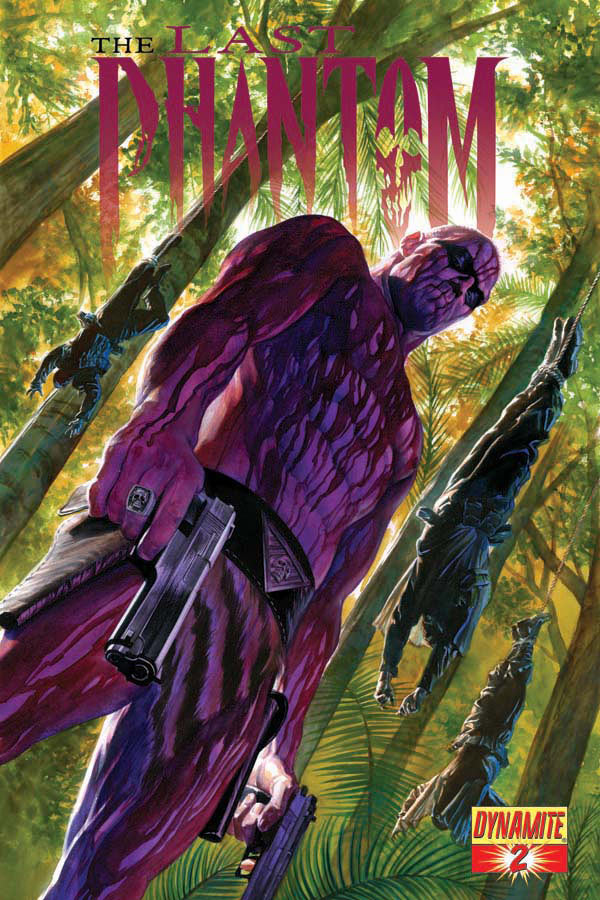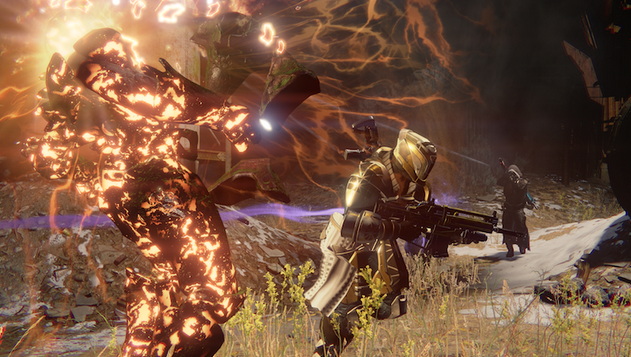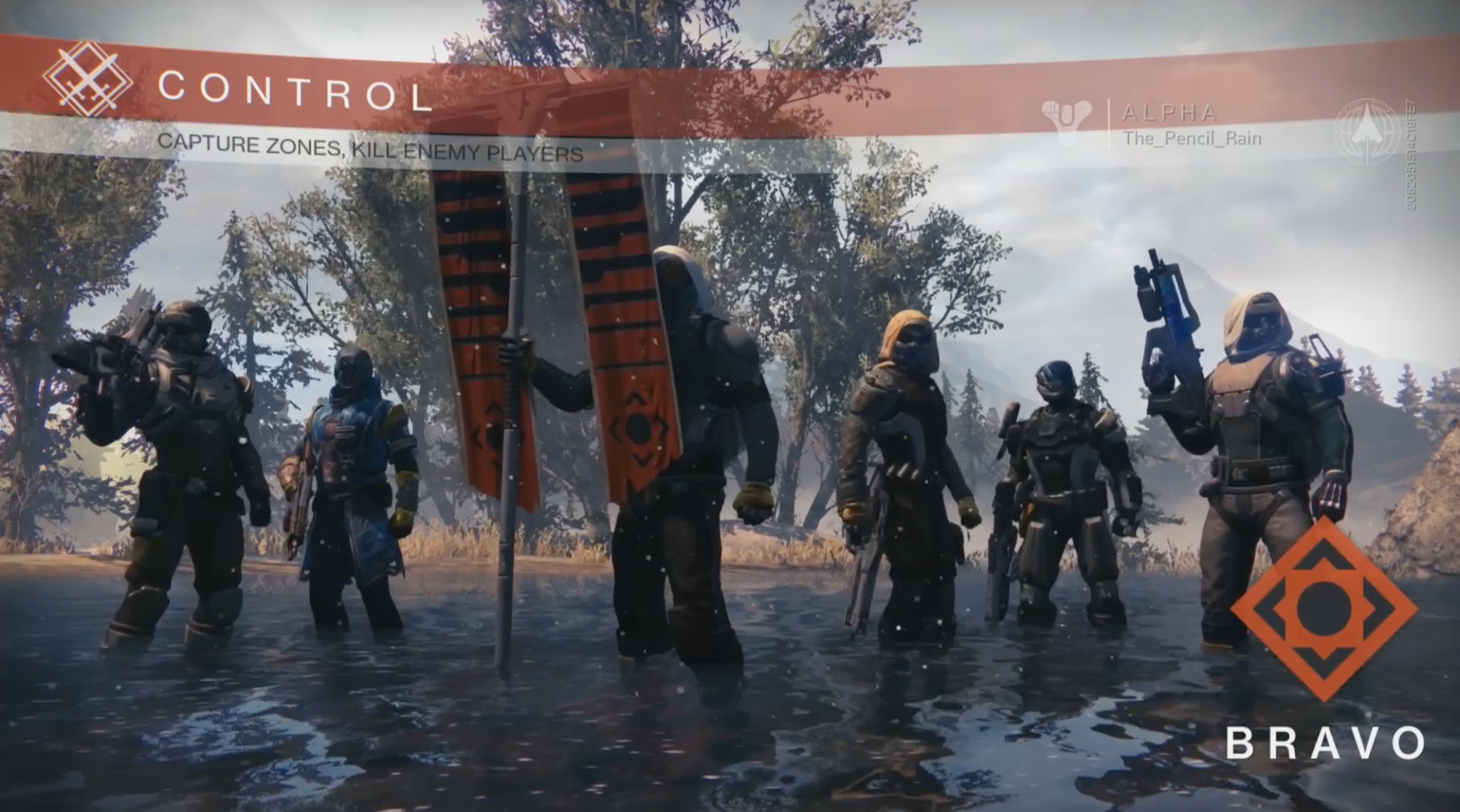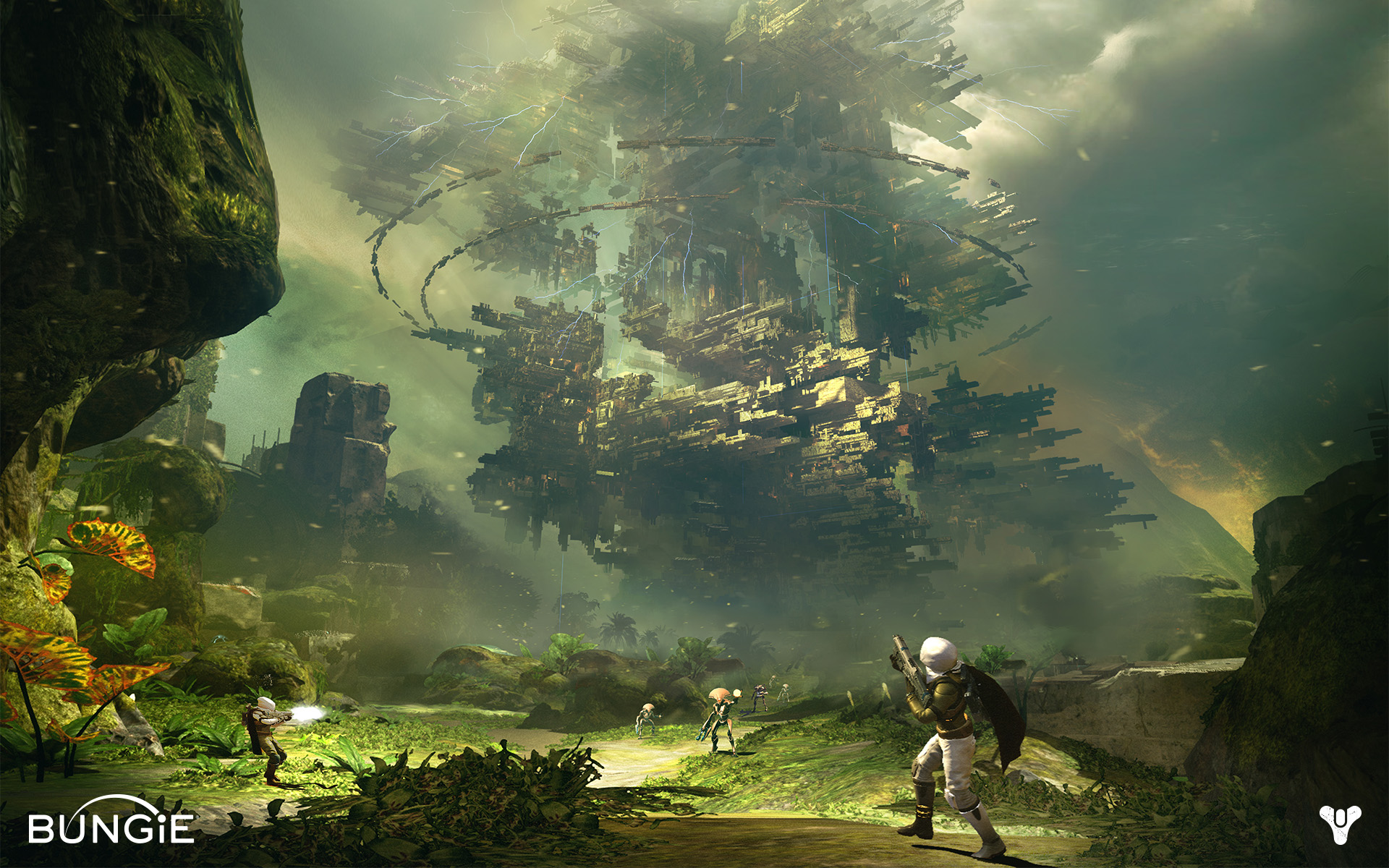Well, probably, but not as big as Activision Blizzard initially reported. Although they announced $500 million in first day sales, they only shipped $500 million worth of units to stores, but the actual sales were quite a bit lower. They really only made about $325 million in sales during the first five days on
Destiny. However, that's nothing to smirk at, and
Call of Duty: Ghosts did the same thing claiming $1 billion sold on day one when the actual number was also significantly lower. It has been one of the most hyped games the public has ever seen with the television marketing campaign costing somewhere in the neighborhood of $6.7 million. However, the fact that they didn't release early copies to critics for release day reviews was a bit disconcerting. When a movie does that, you know it is going to be a stinker. The reasoning Bungie gave for the decision, and it does make sense, is that they wanted critics to have the ability to play a fully populated MMO (Massively Multiplayer Online) rather than one with only a few other critics online at the time. With MMOs, there are thousands of people online at the same time occupying the same virtual worlds, so it would make a difference in how the game appears if critics gave it a try without all of the actual players running around doing missions in the area. It would also make some parts of the game unplayable as they require three-man teams to even begin, much less complete. Anyway, enough with the hype, let's get to the meat of the game!

Gameplay
I'll cut to the chase. This game is about as polished as they come with regard to mechanics. It plays like a Porsche drives. Smooth. You start out by choosing between three types of protagonist. There are Titans, which are the tanks of the game. They can take massive amounts of damage without dying, but lag drastically behind the other two in movement and damage recovery. The second is the Hunter. This character class moves quickly and easily with a high agility score. Unfortunately it takes forever to heal with the lowest recovery setting of the three classes. The third type is the Warlock. This is your typical mage that can recover quicker than the other two, but doesn't have very dangerous attacks outside of its special magic moves. The Warlock isn't the quickest of movers, either. All of that said, I've played all three characters and it seems like Bungie did a pretty good job of balancing out their various skills and deficiencies. Each character also has two subclasses that define their special moves. You should choose your subclass early because any upgrades to one won't transfer over to the other. Pick a subclass based on its special moves and stick with it throughout the game.

Beyond that, you can choose between Human, Awoken, and Exo. You can customize the look of your character, but race and the appearance are only cosmetic. They don't effect how the character plays at all. Humans are, well, like us. They managed to survive the destruction wrought by the Darkness, dubbed the Collapse, and are just trying to survive in the last city not controlled by its minions. The Awoken are humanoids with bluish skin and an ethereal glow about them. They are based on mythological creatures such as elves, vampires, ghosts, and angels. The Exo are either machine or cyborg, I've read both definitions. They supposedly survived the Collapse but have no memory of their history before that.

There are four species of alien enemies that fight for the Darkness: the Fallen, the Vex, the Hive, and the Cabal. The Fallen are scavengers that are attempting to take over the Earth. They are filthy urchins that constantly look for anything of value left behind after the Collapse. Vex are robots that employ a hive mind, all connected to a single consciousness. They came to our universe through warp gates from another dimension and mostly populate Venus. Hive are a species of undead that live on the Earth's moon. Their strength is in numbers and they tend to attack in hordes. Finally, the Cabal are massive creatures that employ thick armor and huge metal shields for protection. They generally stick to Mars missions and are the last species you encounter before finishing the campaign. None of the species like each other and you can often sit back and watch firefights where they kill off one another, leaving a much smaller force for you to take out before moving further through the game's many maps. Unfortunately I had to dig up nearly all of this information about the enemy species online because so little of their background stories is covered in the game itself due to the painfully thin plot. But more on that later.

Special Moves
Each character type has two special moves. The first is called a Super Charge and it is the more powerful of the two. The second is a melee attack that has various effects depending on character type and subclass. All special moves can only be used sparingly and take time to recharge. Grenades act the same way.
Titan
The Titan's Super Charges are titled Fist of Havoc and Ward of Dawn. The Fist causes the player to jump in the air and come crashing down, slamming both clinched hands into the earth causing high levels of damage to any nearby enemies. Ward of Dawn creates a small shield through which the player can fire but no projectiles can penetrate. The Titan's melee attacks are dubbed Storm Fist and Disintegrate. Storm Fist is simply an overpowered punch that does a lot more damage than your average pop to the jaw. Disintegrate actually has nothing to do with disintegration. After you smack an enemy you absorb any incoming attacks and transform them into ammo, health, or a quick recharge for Storm Fist.
Warlock
The Warlock's Super Charge attacks are referred to as Nova Bomb and Radiance. Nova Bomb hurls a bolt of damaging light at the enemy. Radiance boosts your skill recharge speed, damage resistance, and melee damage resistance for a brief period. The Warlock's melee attacks are called Energy Drain and Scorch. The first one, strangely enough, drains energy. Heh. It removes health from your enemy and speeds the recovery of your health, grenades, or Nova Bomb. More than any other character class, I found the effects to the Warlock's Super Charge attack to be vastly superior to its melee attack.
Hunter
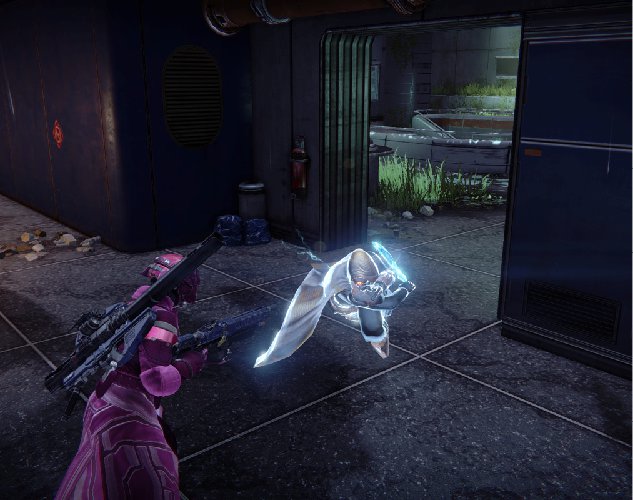
The Hunter's subclass' Super Charges are Arc Blade and Golden Gun. These two are easily the most visually appealing of all the special moves. Arc Blade generates a knife of pure energy for about eight seconds, letting you attack as many enemies as you can in that time period. For most, one shot is all it takes. Bosses may require multiple hits, but the attacks come so fast that they can't do anything but reel in pain from the impact. With Golden Gun, you fly up into the air in a yellow whirlwind of flame, landing with a fiery pistol in your hand. You have three highly damaging shots with the revolver that, again, take out nearly anything but a boss with a single shell. The Hunter's melee attacks are Throwing Knife and Blink Strike. It's as if Bungie had to balance the beauty of the special moves with the plainness of the melee attacks. Throwing knife is decently effective, but no more impressive in graphic design than a knife thrown in Call of Duty. Blink Strike is also unimpressive, being merely an extended melee attack with more range than your standard stab with a kitchen knife.
Bang Bangs and High Fashion

There are a plethora of weapons and armor to choose from in Destiny. Your character carries one primary weapon, one secondary weapon, and one heavy weapon. The primary weapons include auto rifles (machine guns), hand cannons (revolvers), scout rifles (hunting rifles), and pulse rifles that fire three-round bursts. The secondary weapons are the shotgun, fusion rifle, and sniper rifle. Heavy weapons are just a rocket launcher and a machine gun. Each weapon group can have a variety of upgrades. I won't bore you with every single option as that list would take up three pages and this review is long enough already. Some examples are Quickdraw, Upgrade Damage, Kinetic Damage, Extended Mag, Hawkeye, Warhead Verniers, Reactive Reload, and Void Damage just to name a few. Upgrades are available on every weapon and must be earned in battle. On top of that, you have to have enough Glimmer, the primary currency of Destiny, and, with many, additions like Ascendent Shards, Weapon Parts, and Plasteel Plating.
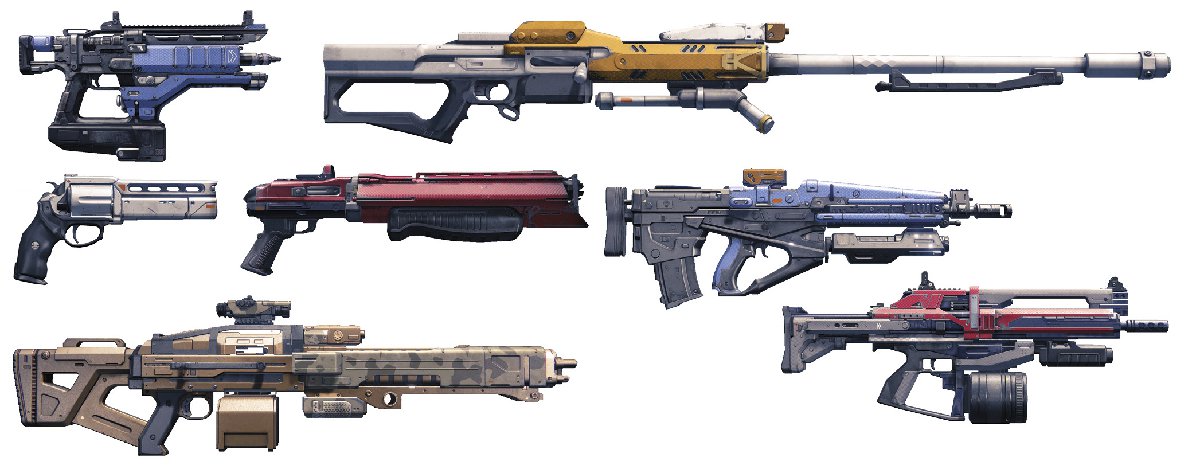
The armor consists of four different pieces: the helmet, gauntlets, chest armor, and leg armor. Each one carries with it bonuses, just like the weapons. Not only do they have the same upgrades as the guns, but they also hold bonuses for Intellect, Discipline, and Strength. That's just a short way of saying your Super Charge, your specialized grenades, and your melee attack, respectively. You also wear a class identifier, which is a scarf for the Titan, a cloak for the Hunter, and a bond for the Warlock. You can also purchase these pieces of clothing in order to ally yourself with one of the cults (More on them later). While wearing a piece of cult clothing, all of your reputation points go toward that cult rather than your Vanguard score. It makes little difference beyond allowing you to purchase items from specific vendors. There is no bonus or upgrade given by wearing one piece over another.
Campaign
While the gameplay in this game is fantastic, its one shortcoming is in the story. I suspect the reason for so many of the hot-or-cold reviews that have been coming out is the plot. It is very vague and there isn't much to it. The Traveler - a massive, moon-sized, planet-looking thing - comes to Earth and teaches us about space travel. Humans populate Mars and Venus. Then, the Darkness, the Traveler's ancient enemy, destroys nearly all of mankind. A small group of humans, Awoken, and Exo survived and are fighting the minions of the Darkness. There. That's the whole thing in four sentences. Of course there are more detailed mini-stories in the missions, but that's the gist. The missions usually consist of traveling to somewhere, killing a bunch of minor enemies, then killing a boss and going back to the Tower for a reward. Usually I'm worried about giving away too many spoilers in a review but with Destiny it's hard to do so because there's just not that much to spoil. It's unfortunate that the story doesn't have much depth because the rest of it is spectacular, but sadly that's the case.

For players that were expecting the next science fiction epic like Halo or Mass Effect, they will be sorely disappointed with Destiny. The universe is sparse and barren. The massive hype of the next epic science fiction masterpiece has fallen painfully flat. For players that just wanted a finely polished FPS MMO, there are few out there that are better. I believe that the main culprit behind all of the highly polarized reviews, both from professional critics and users, is the thin plot. It's like Bungie spent so much time building lush, verdant landscapes and intelligent, believable AI that they ran out of time and threw the story together in the last thirty minutes before the deadline. I fully expect that Destiny 2 will flush out the universe quite a bit due to all the negative press. At least I hope so, because the franchise has such great potential that it would be a crying shame to let it remain so unfulfilled.
There is a soft cap of 20 on every character, but it is possible to go beyond that ceiling by collecting "Light Points." The only way to get light points is by equipping gear that has a certain light point amount assigned to it. With this light-infused gear on your character, your level can rise above the level 20 cap. I've seen players online reach as high as 27, but I'm not sure there is a true cap on your character. Due to the limit of 100 Vanguard/Crucible marks (other currencies) you can accrue per week, it's hard to tell this close to the game's release what the true limit is, if any. It isn't necessary to join a cult in order to get gear with high light points, not to mention damage/defense numbers, but it helps.
Multiplayer Games
Initially the pure multiplayer aspect, dubbed the Crucible, left me feeling more than a bit disappointed. There was only a single game type on the Xbox One. I'm not much of a multiplayer addict. I just prestiged my first character on
Call of Duty: Ghosts last month if that's any indication. Due to that fact, I've done less-than-spectacularly in the Crucible. That said, I've managed to level up to 24. They equal out the leveling for the purposes of multiplayer, but I suspect from my numerous deaths that the same can not be said for the weapons and armor. I'll shoot someone five times with a high-powered rifle and they just hit me once with a machine gun and
I'm the one that goes down. Something's not right about that.
Vanguard
The Vanguard is a game mode where you take on Strike missions with two other players. There are four levels of Vanguard mission to choose from of varying difficulty. The game requires that you undertake these missions with three players, but that doesn't mean you have to have two other friends online in order to complete them. The servers do a good job of matching you with similarly-leveled players. These missions offer you Vanguard Reputation and Marks that can be spent with the Vanguard and cult merchants in the Tower to purchase special armor and weapons. There is a limit of 100 Vanguard/Crucible Marks per week that can be earned. I'm not sure if that's to keep the multiplayer from becoming an unbalanced mess, to keep players coming back each week for more, or a little of both. Either way, I've maxed out my Vanguard/Crucible Marks for the week so my desire to run these slightly more difficult missions has wained until next Monday.
Crucible
The Crucible is the game's true multiplayer portion. It started with only one game type on day one of the release, but it has since expanded to four. That's still a sadly low number for the developers who essentially created the multiplayer craze with Halo, but it's enough to keep a casual multiplayer participant like myself happy for the time being. The four game types are called Control, Clash, Rumble, and Skirmish. In Control, two teams of three players have to capture three zones and hold them. Doing so increases your point total for every kill. Clash is classic team deathmatch with six gamers on each team. Rumble is an every-man-for-himself game where every one of the six players is out for the others' blood. Skirmish is just a smaller version of Clash where the teams are made up of three players instead of six. In Crucible matches, you win Crucible Reputation and Marks, which are spent on weapons and armor from one of the three cults.
Join a Cult
There are three factions in
Destiny. Bungie refers to them as "cults." They include The Future War cult, the Dead Orbit cult, and the New Monarchy. You have to reach level 20 before you can join up with one of them, but they're the only way to get the most powerful weapons and armor in the game. Well, almost the only way. You can stay non-affiliated and use your Crucible Marks to buy things from the Crucible salespeople in the Tower. All four factions' pieces of armor contain a light point amount. As mentioned before, light points are the only way you can level up your character above the soft 20 cap. From what I can tell, the cult contacts in the game (there are three, one for each group) and the two Crucible salespeople (a non-political, general group) have the best weapons and armor for sale when compared to the Vanguard leaders.
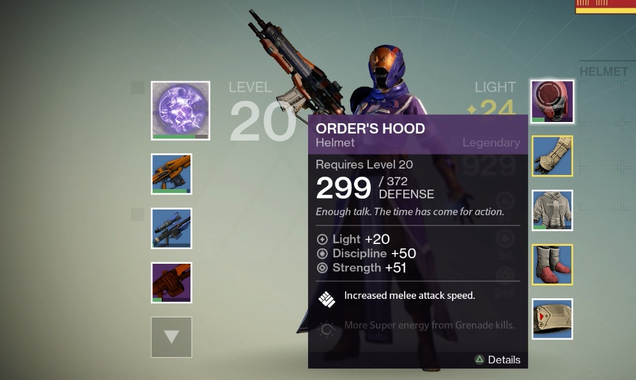
There are advantages to choosing one cult over another based on the way you choose to play. Each one has an effect on two of your three attributes, those being Intellect, Discipline, and Strength. Choosing a cult will give you the opportunity to gain bonuses to these attributes through their armor. If you purchase Dead Orbit armor you get a bonus to Discipline and Strength, reducing the cooldown time of your grenades and melee attack. Joining the Future War gives boosts to your Intelligence and Discipline (grenade and Super Charge cooldown). The New Monarchy offers you the chance to get bonuses in Intelligence and Strength (Super Charge and melee). Each group has a history that isn't really covered in the game and I won't get into here. You don't use Glimmer to purchase items from the Dead Orbit, New Monarchy, Future War, or Crucible vendors. Instead, you have to earn Vanguard and Crucible Marks. These are an entirely separate type of currency that must be earned by doing Strike missions for Vanguard marks or Crucible battles for theirs.
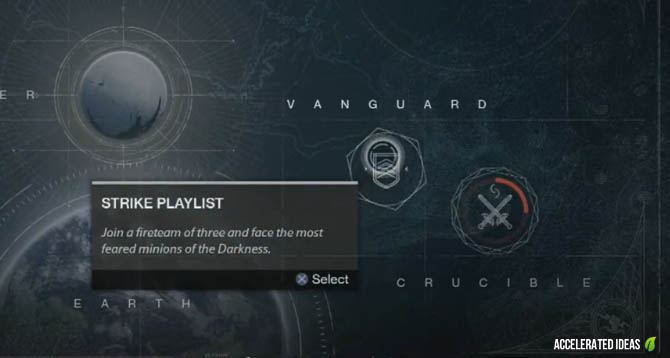
Music and Environment
Two places apart from the gameplay where Destiny really shines are the lush soundtrack and the impressive, varied battlegrounds. That shouldn't be a surprise, though. Bungie used the same duo of composers that wrote the music for the Halo series, Michael Salvatori and Martin O'Donnell. Even Paul McCartney collaborated on the project. Yes, that Paul McCartney. The music fits the game perfectly, building with the action and easing off into lush soundscapes for the menus and load screens. The suspenseful parts of the game were made even more intense with spooky ambience. There are even seamless transitions between portions of the game where there normally would have been only silence.

The environments are as sumptuous and varied as the planets on which they represent. The Earth portions take place in what used to be Russia and it is every bit a decrepit wasteland as Mad Max or Cormac McCarthy's The Road. The moon looks just like the footage we've all seen dozens of times in movies and on television. The Red Planet appears like the shots that were beamed back from the Curiosity rover. Some poetic license was taken and "ancient" ruins were added to give the maps some variety. Finally, Venus emerges as a tropical rainforest after it had been developed by terraformers. Suffice it to say the graphics in this game are second-to-none.
Tick, Tock, Tick, Tock...
According to www.howlongtobeat.com, Destiny takes ten hours to complete the main story and seventeen-and-a-half for the campaign plus extras. I found that to be a bit of an underestimate. I did all of the missions in the game including the Strike missions and easily spent twenty-plus hours on the campaign before I even touched the multiplayer modes. Now, I'm a bit of an OCD perfectionist when it comes to finishing a big game that I'm enjoying (That's a nice way of saying I'm anal), but even so, it isn't something you can do in a day like the Call of Duty campaigns. So plan on a good week or so unless you're one of those people who partakes in eight-to-ten hour marathon gaming sessions.
The Math
Objective Score: 9/10
Bonuses: +1 for being one of the smoothest games I've played, mechanics-wise, not to mention it's just plain beautiful. Plus, your sidekick, Ghost, is voiced by Tyrion, Game of Thrones' Peter Dinklage!
Penalties: -1 for the paper-thin plot. I mean, come on! What did they spend, twenty or thirty minutes writing the story? This is supposed to be the next big science fiction franchise, but instead it's merely an FPS MMO, albeit a very good one. Here's hoping Destiny 2 brings a lot more to the universe than Bungie's first outing did. -1 for the painfully long load screen scenes. I realize that it would take light years to reach Venus, but that doesn't mean you have to take it literally in the game for the sake of realism. I probably spent at least 2 hours of my life during the last week watching my ship hover in space between missions as it loaded up the Tower or the next mission.
Nerd Coefficient: 8/10. Well worth your time and attention.














